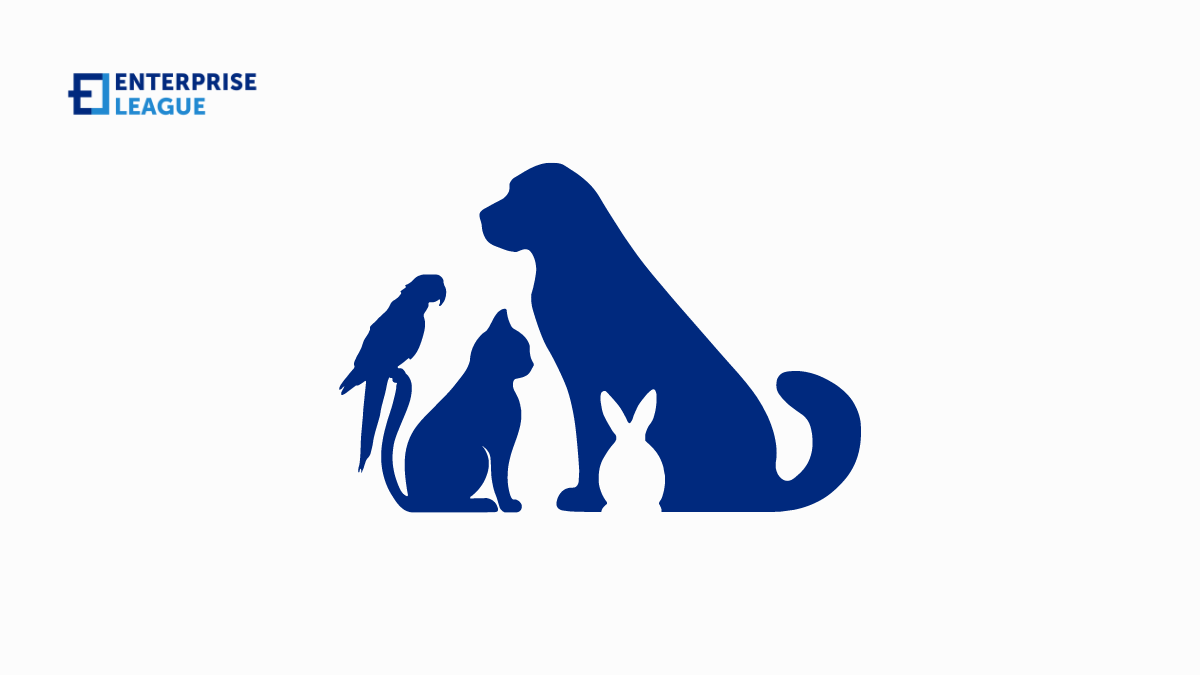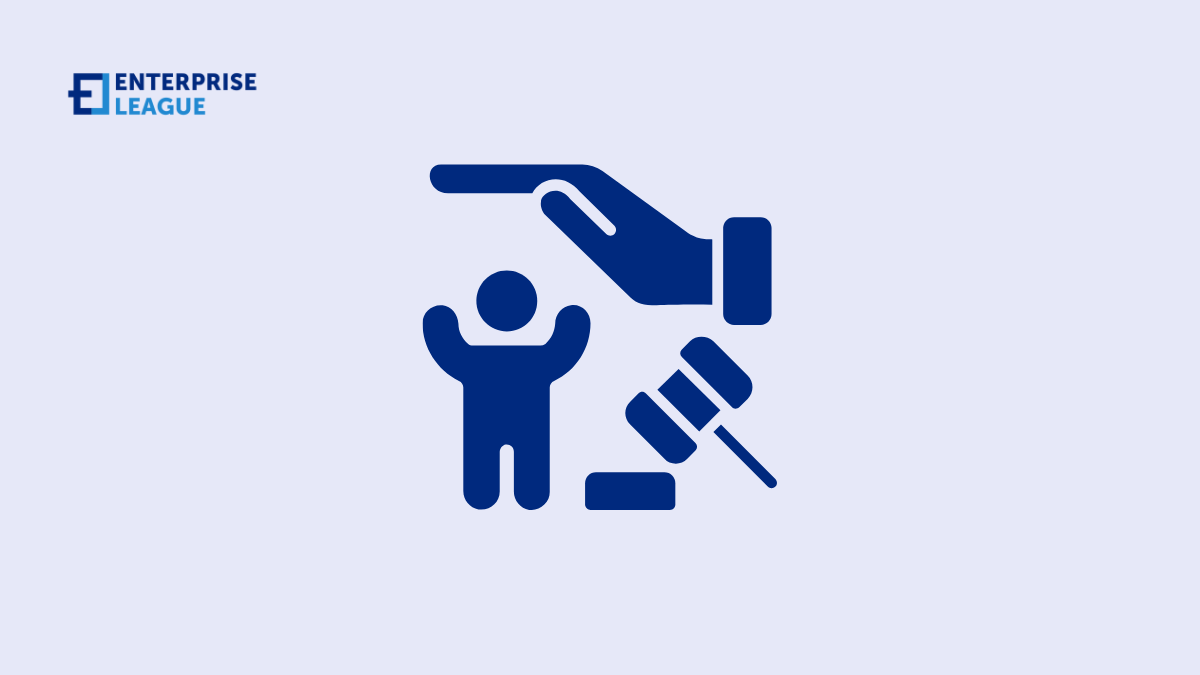If you are tired of awkward office Secret Santa exchanges, our step-by-step guide helps you create a fun, inclusive, and drama-free gift-giving experience.

Top 18 profitable pet business ideas in 2025
As more and more people treat their pets like family members and in fact, spend more than $100 billion on their pets each year. As a result, the demand for pet products and services has skyrocketed – which opens the door for new entrepreneurs who have unique and creative pet business ideas.
Whether it’s creating unique pet toys, offering grooming services, or starting a pet-sitting business, the opportunities are endless. Turning your pet business idea can be rewarding and profitable, especially for those passionate about animals.
Best 18 pet business ideas
Here are some creative and profitable pet business ideas that you can start right away:
Pet photographer
A pet photographer specializes in capturing professional photoshoots of clients’ beloved companion animals via creative portraits and candid in-home sessions. This idea appeals to pet owners seeking to preserve precious memories with dogs, cats, horses, and exotic pets through framed fine art prints and custom gifts featuring their furry friends.
Beyond capturing cute pet mannerisms through an experienced artistic eye, comprehensive sessions include posed family integrating human members for a well-rounded memento commemorating special bonds immortalizing the positive role pets play in everyday life. For animal lovers, offering keepsake photographic services enables treating the cherished creatures in their families with the same significance as human relatives when marking milestones.
How much you can make: $30K – $100K annually
How much does it cost to start: $5K – $20K
How long does it take to build: 3-6 months
Online print on demand store for pet clothing and accessories
An online pet apparel and accessory store using print-on-demand services has minimal start-up costs or inventory risks. You can leverage social media marketing and outsourced production. Clothing stores are straightforward beginner e-commerce businesses. Print-on-demand companies handle manufacturing and order fulfilment tasks so you can focus on creative design work and digital marketing to promote your custom pet products. This allows easy entry into selling customised t-shirts, bandanas, toys and more without production burdens. The pet accessory market by itself has also exploded over the last few years, with products like pet carrying backpacks, dog beds, cooling mats, etc. So even if you don’t have printing capabilities, the pet accessory market is still a great sector to explore.
How much you can make: $50k+ profit potential
How much does it cost to start: Under $1,000 to set up
How long does it take to build: 3-6 months to optimise and drive traffic
Pet food delivery service
A pet food delivery business can thrive by focusing on unique, specialized products not widely sold in stores. This differentiation and niche targeting allows you to better appeal to discerning pet owners seeking premium, healthy diets. Highlight your sourcing of quality ingredients and customized meal plans. Offer superior customer service through personalized consultation and subscriptions tailored to pets’ needs. Convenience and customization around harder-to-find pet food could drive customer loyalty and word-of-mouth referrals.
How much you can make: $75-100k revenue potential
How much does it cost to start: Around $10k for vehicle and supplies
How long does it take to build: 6-12 months to establish client base
Animal rescue
Animal lovers who frequently rescue stray pets may want to turn their compassion into a career. Animal rescue shelters rely on volunteers and nonprofits, but you can still build a for-profit business in this area by identifying a niche and services that will be financially sustainable. Before opening an animal shelter, research regulations and ensure compliance so you can operate legally while making a positive difference for homeless pets.
How much you can make: Mostly nonprofit but can earn donation revenue
How much does it cost to start: Low start-up costs
How long does it take to build: 1-2 years to build reputation
Reptile breeding
While cats and dogs remain popular pets, more people now prefer snakes, geckos, turtles and other reptiles. This expanding market presents opportunities for small business owners. However, you must research and comply with laws and regulations first. Some states require permits for selling, trading or breeding reptiles. Many also prohibit ownership of venomous snakes and bearded dragons. Understanding the legal landscape is essential before opening a reptile shop.
How much you can make: $30-60k profit
How much does it cost to start: $5-10k initial costs
How long does it take to build: 1-2 years to establish breeding stock
Aquarium shop
An aquarium shop appeals to those fascinated by aquatic life and environments. Customers ranging from home decor enthusiasts to professional breeders and collectors appreciate these stores for their offerings of fish, plants, tanks, and accessories. As a niche business, an aquarium shop meets specialized needs while allowing owners to immerse themselves in an area of personal interest and expertise. The relaxing nature of the inventory can translate into a rewarding venture.
How much you can make: $100-250k revenue potential
How much does it cost to start: Around $50k inventory and supplies
How long does it take to build: 6-12 months to build customer base
Online pet consulting
As an animal expert, you could launch an online pet consulting business sharing your knowledge on health, training, care, and more. Build authority through a blog, videos, podcast, or social media guiding other pet owners. With low overhead costs thanks to working remotely, focus on attracting an audience and monetizing your advice to scale this inventive venture.
How much you can make: $80-150k as solo consultant
How much does it cost to start: Under $1,000 start-up costs
How long does it take to build: 6-12 months to gain clients
Find lost pets
Pets vanishing leaves families devastated, feeling as though they’ve lost a dear family member. Many people will financially compensate pet recovery experts to find their lost animal companions. Contact and create partnerships with local animal shelters, veterinary offices, pet stores, and community centers to become their referred pet detective that grieving owners can hire when their precious cats, dogs or other pets inexplicably disappear. Let your network connections and word-of-mouth testimonials establish your lost pet tracing services as trustworthy and efficient.
How much you can make: Up to $50 per retrieved pet
How much does it cost to start: Under $1,000 start up costs
How long does it take to build: A few months to market services
Pet ID tag engraving services
Offer custom pet ID tag engraving services. With engraving tools and tag inventory, provide on-site engraving at pet stores, vet clinics or adoption events. Promote via social media, local shops and community boards. On-demand engraving at markets and collaborating with shelters can attract early customers. Expanding service offerings and customizing keeps clients interested. Focusing on convenience and individualization creates returning pet owner relationships.
How much you can make: $20-30k part-time income potential
How much does it cost to start: $2-5k for engraving equipment
How long does it take to build: 3-6 months to gain customers
Beekeeping business
Beekeeping can be a rewarding business for a patient, solitary person who loves nature. The main cost is buying land well-suited for housing beehives. Ideally, you would already own appropriate acreage before launching this small enterprise. With some steadiness and existing rural property, beekeeping can yield sweet returns.
How much you can make: $30-60k profit
How much does it cost to start: $10-15k upfront for hives and bees
How long does it take to build: 1-2 years to establish hives
Commercial aviary
Operating a commercial aviary can be challenging, but also rewarding for a seasoned bird enthusiast. Due to the complexities of properly caring for and breeding birds on a large scale, extensive prior hands-on experience with aviculture as a hobbyist is strongly advised before attempting this niche business.
How much you can make: $100k+ profit potential
How much does it cost to start: Tens of thousands for enclosures and birds
How long does it take to build: 2+ years to breed stock
Guard dog business
Dog lovers with professional training experience could pursue extra income by launching a security canine service. Possibilities include instructional programs to teach guard dog abilities, leasing trained protection dogs for events/sites, breeding and selling these specialized pups, or blending those offerings to suit different clients’ needs.
How much you can make: $40-60k revenue
How much does it cost to start: $5-10k for dogs and supplies
How long does it take to build: 6-12 months to train dogs
Petting ZOO
If you have a soft spot for kids and creatures, a petting zoo harmonizes those passions into a snuggly small business. Put that veterinary/zoo/farm background to work curating cuddly encounters. But first secure ample acreage and shelters for the goats, pigs, ponies, etc. Upfront costs for land and barns can be steep. Ideal if you already own suitable property and livestock.
How much you can make: $50-100k revenue
How much does it cost to start: $15-30k for animals and enclosures
How long does it take to build: 1-2 years to obtain permits
Horseback riding lessons business
For those with horseback riding skills and experience, offering lessons can make for a rewarding animal-related business venture. Drawing on their expertise with horses, instructors can provide guidance to new riders while turning their passion into profit. Additional services like boarding, grooming and training horses could also be included, for those with the proper facilities and horse know-how, allowing for multiple streams of potential income. Capitalizing on equestrian capabilities, this type of animal business allows skilled horse enthusiasts to monetize their talents.
How much you can make: $30-60k profit potential
How much does it cost to start: $15-30k for horses and facilities
How long does it take to build: 6-12 months to fill classes
Mobile pet grooming business
A profitable pet business idea is a mobile grooming service. This involves traveling to clients’ homes to bathe, brush, trim and care for their dogs, cats or other pets. To start, you’ll need a vehicle, quality grooming tools, business cards and flyers. Focus first on dogs, then consider expanding to other animals if demand exists. Going directly to people’s houses makes pet grooming convenient for customers while letting you operate this thriving hands-on business on the go.
How much you can make: $40-60k profit
How much does it cost to start: $10-15k van and equipment
How long does it take to build: 6-12 months to fill route
Mobile clinic for pets
A mobile veterinary service offers promising business opportunities. Many pet owners prefer at-home treatment when their animals are ill rather than locating a clinic. Vet doctors seeking additional income streams should consider bringing medical services directly to pets instead of waiting for appointments. With adequate transportation and medical equipment, this on-demand approach caters to clients valuing convenience and comforting surroundings during their pet’s care. By traveling to households already, this establishes a presence with localized markets.
How much you can make: $100-200k profit potential
How much does it cost to start: $50-100k vehicle and supplies
How long does it take to build: 1-2 years to establish
Pet fitness classes
Start a small business providing physical fitness services for household animals and the humans who care for them. Potential class offerings include yoga tailored for different types of dogs, agility courses to build strength and stamina, and swimming lessons for dogs to stay active even on hot days. Activities can be bonding experiences for both pets and owners.
How much you can make: $40-60k profit
How much does it cost to start: Under $1k start-up
How long does it take to build: 6-12 months to fill classes
Pet-friendly travel planning
Offer a travel planning service designed specifically around the needs of pet owners. This business would focus on booking accommodations at pet-welcoming hotels, rental homes, etc. and crafting travel itineraries suited for bringing pets along. Additional services could include providing pet travel accessories like carriers, bowls, waste bags, etc. as part of an all-in-one trip planning solution for people who want to bring their furry companions on vacation.
How much you can make: $60-100k solo consultant potential
How much does it cost to start: Under $1k start-up
How long does it take to build: 6-12 months to gain clients
Conclusion
More must-read stories from Enterprise League:
- Creative couple business ideas you should be aware of.
- Innovative and profitable business ideas with no employees.
- Creative and profitable 3D printing business ideas.
- Get inspired from this list of creative craft business ideas.
- Creative and profitable outdoor business ideas you should be aware of.
Related Articles
Organizing smooth and stress-free office Secret Santa
Your guide to securing sensitive business information
From client records to trade secrets, protect your business’s sensitive information and data with these practical solutions for modern security challenges.
How GPS trackers and fleet management systems are driving business efficiency
Whether you’re running a small delivery service or managing a large trucking company, these modern tracking tools are changing how the whole game works.
Transform your office: Best office furniture companies in San Diego
Find everything from executive desks to ergonomic chairs at San Diego top office furniture companies. Local experts help businesses create productive workspace.
Retail business model fundamentals and best practices
Understanding the retail business model is crucial if you’re planning to enter the market, so let’s break down some pricing strategies and stock management.















